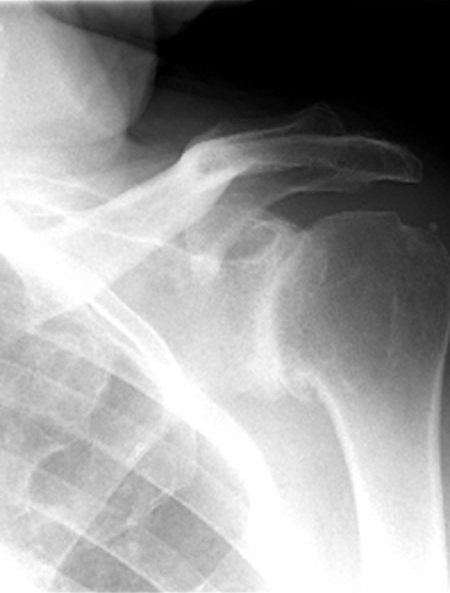Shoulder replacement is a procedure where the worn out or damaged shoulder joint is replaced with an artificial joint. Although the components themselves are similar in nature and material to knee and hip replacements, the shoulder joint is a more challenging joint, both for surgeon and patient alike. Unlike other major joint replacements, shoulder function relies more heavily on the condition of muscles and tendons.


Shoulder replacement is used most commonly for the following conditions:
- Osteoarthritis
- Severe fractures
- Rotator Cuff Arthropathy – this condition generally affects older patients whose shoulders have arthritis and extreme weakness due to large long standing rotator cuff tendon tears. A special type of replacement called a Reverse Total Shoulder Replacement can dramatically improve pain and function in these patients. For more information see Reverse Total Shoulder Replacement.
Before Surgery
Often surgery can be delayed or avoided. Simple analgesics, anti-inflammatory medication, physiotherapy, osteopathy, acupuncture and cortisone injections all have a role in individual patients. If these measures are not successful in improving pain and function, then replacement becomes an option
Usually, more than one consultation is necessary. A detailed history is taken and the shoulder is examined. Simple X-rays are usually adequate at the initial consultation, but, if surgery is contemplated, further planning will require an MRI scan and / or a CT scan which will be organised. All of the advantages and any potential risks are thoroughly discussed.
Surgery and Recovery
You will have a general anaesthetic and the anaesthetist will also perform a nerve block with local anaesthetic which will relieve any post-operative pain for the first 24 hours. Your discomfort will begin to taper off after the 2nd post-operative day but you might require strong oral pain relief for a few weeks. Your arm will rest in a sling for 6 weeks, but during this period certain exercises will be performed a few times a day, with visits to a physiotherapist once or twice a week. Progressive exercises and activities are then introduced. Although pain relief will be noticeable from a very early stage, mobility and strength take time to develop over 3 to 6 months.

 02 6621 25 88
02 6621 25 88
